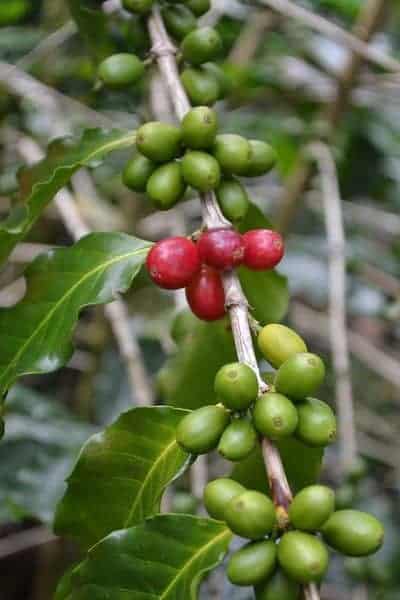What is the origin of coffee? Where does this plant, which today produces the most popular drink globally, come from? Who was the first to decide to consume it? How did it spread to various regions of the planet? How did the fruits of a bush become the most popular drink in the history of humanity? These and many other questions will be answered in today’s article.
If you want to know a little more about the history of coffee, then read on and join us on an exciting journey around the world and into contemporary history.
Brief history of coffee
The coffee plant was already consumed and known since much earlier. Still, the first real and scientific description of it was not found until 1592, a century after the colonisation of America. It was the work of Prospero Alpini, a Venetian doctor and botanist, who, in addition to describing the plant, also described its therapeutic uses. Alpini had previously been responsible for bringing the coffee plant to Europe for the first time, specifically to Venice.
As a curiosity, in 1713, Antoine de Jussieu classified this plant as a variety of jasmine (he did not call it Jasminun Arabicanum in vain). It was not until 1737 that Linnaeus finally classified it into a unique genre specific to coffee: Coffea. At that time, only one species of coffee was known: Arabica, although today we know, of course, that there are many more (over a hundred).
Related: Who, when and where the coffee maker was invented?
Origin of coffee: Where does coffee come from?
Coffee comes from the beans of a plant called the coffee tree. The coffee tree is a tropical, perennial plant with very variable morphology. The coffee beans are roasted and then ground to produce the coffee with which the infusion we all know and consume today is traditionally prepared (using different methods).
More recently, green coffee beans are also consumed (unroasted) to take advantage of the fruit’s innumerable antioxidant properties.
To get an idea of the breadth and variety of coffee trees and the different qualities that coffee has depending on its origin, one piece of information is enough: it is estimated that there are around 6000 different types of coffee trees in the world that produce more than 100 species of coffee (although only two are used for human consumption: Arabica and Robusta). Most are small trees or bushes, but some can be as tall as 10 metres.

Where does the coffee come from?
The origin of coffee in the world remains a mystery to everyone. However, the most accepted theories point out that the ancestors of the current inhabitants of Ethiopia (or in any case in the area of the Horn of Africa) were the first humans to recognise the properties of coffee and cultivate the beans of the coffee plant.
From the regions of Abyssinia, it would later spread eastwards, and it began to be cultivated and consumed with great success in Arabia and India. It was due to the trade and pilgrimage routes of the Muslims (to Mecca), which crossed the Asian continent from one end to the other.
Similarly, the reverse journey was made by Venetian traders, who were responsible for introducing coffee to Europe. Unfortunately, there is no evidence or proof to prove these facts unequivocally.
A different question is where the coffee is grown. Today, the coffee plant has spread worldwide, and many different varieties of coffee are cultivated in the most diverse corners of the globe: from Ethiopia to South and Central America and many parts of Asia.
The main ‘culprits’ in the globalisation of coffee were the Dutch, who imported the coffee plant throughout their colonies and managed to acclimatise it to survive under unequal conditions.
Who discovered coffee?
As we have already said, there are many doubts about who was the first village or person to discover the qualities of coffee as a beverage. However, it does seem clearer that the regular consumption of the product began in Ethiopia, specifically with beans of the Arabica species.
Originally, Arabica coffee was consumed in infusions with the leaves, while the fruits were chewed. There is also a legend that tells of Kaldi, a shepherd from Yemen (there are also versions that speak of the shepherd being Ethiopian) who one day realised that his goats were running and behaving with unusual energy and euphoria and that these behaviours occurred just after eating the beans and leaves of the coffee bushes.
Later, the shepherd brought some branches and fruit from these bushes to a nearby convent and told the monks what had happened. The superior of the convent threw the fruits of the coffee tree into the fire by accident, and in this way, it is said that man first came across the aroma of roasted coffee.
Can we attribute the discovery of coffee to Kaldi? Of course, the legend is vague, but everything indicates that this is the most probable theory.
Related: Coffee for plants
